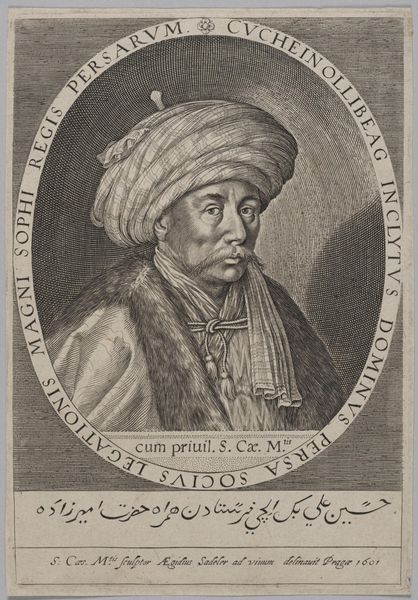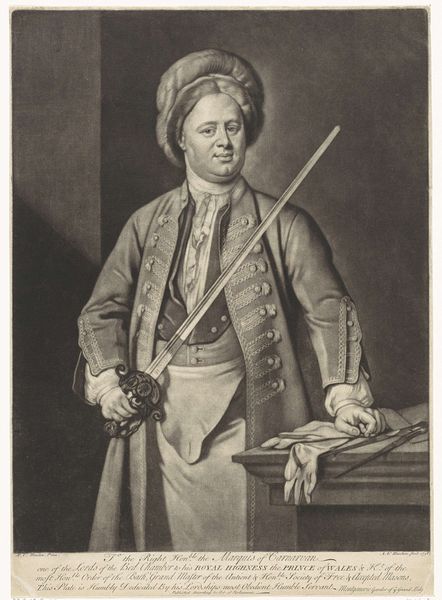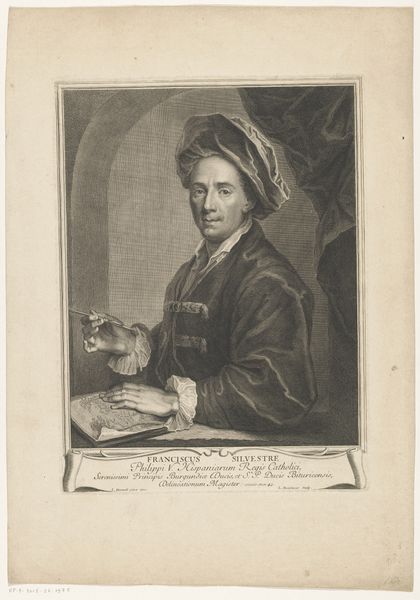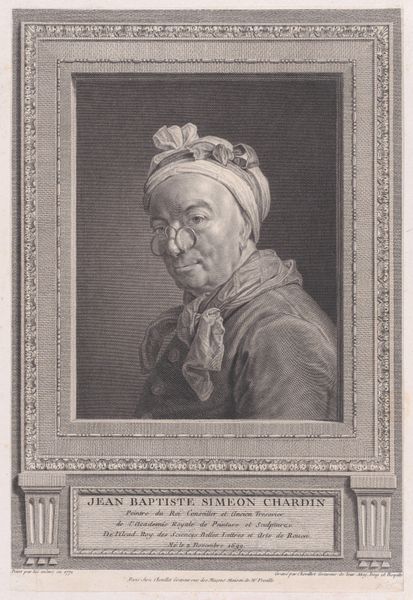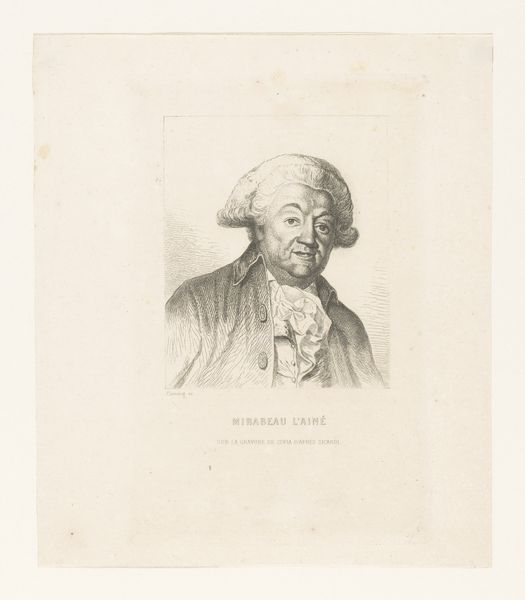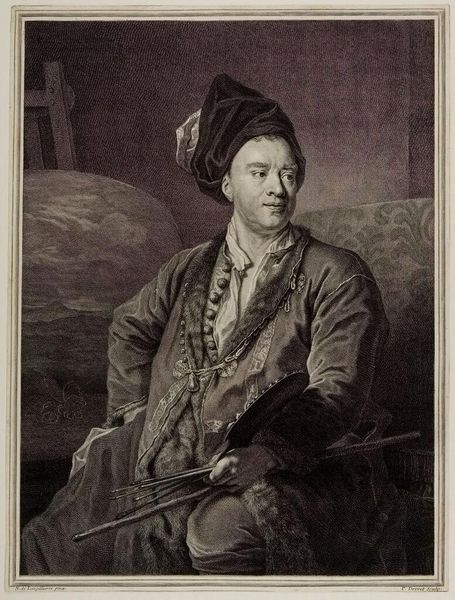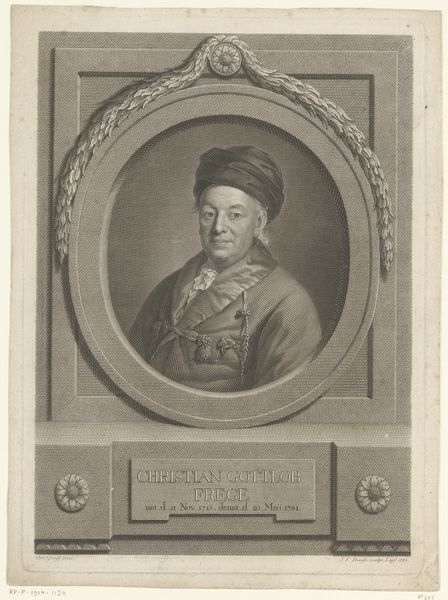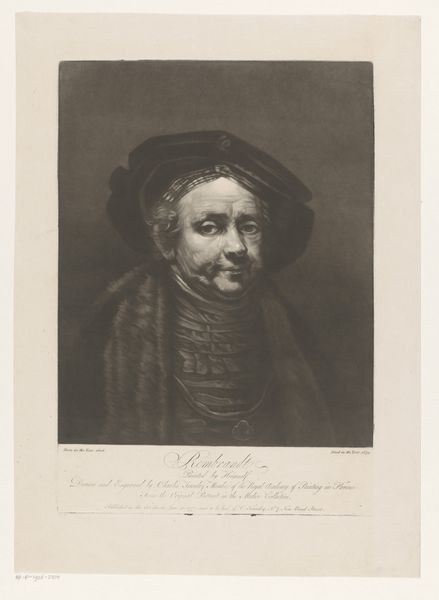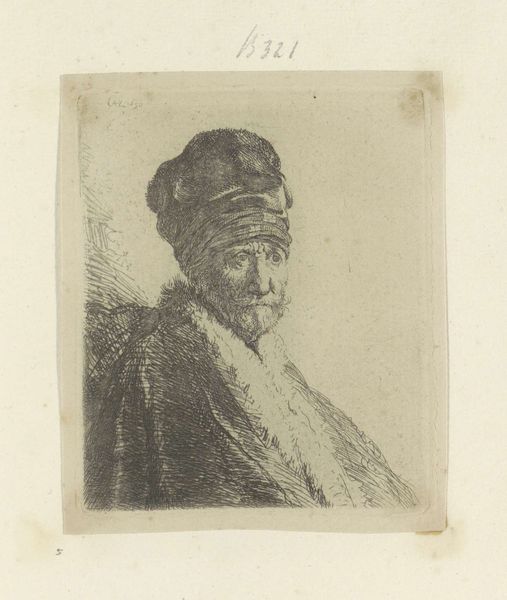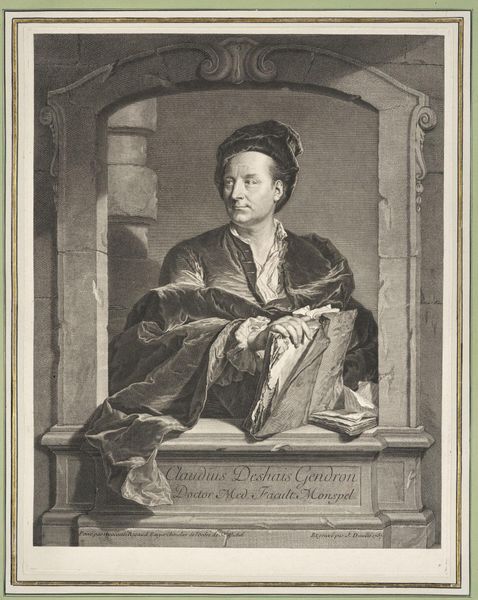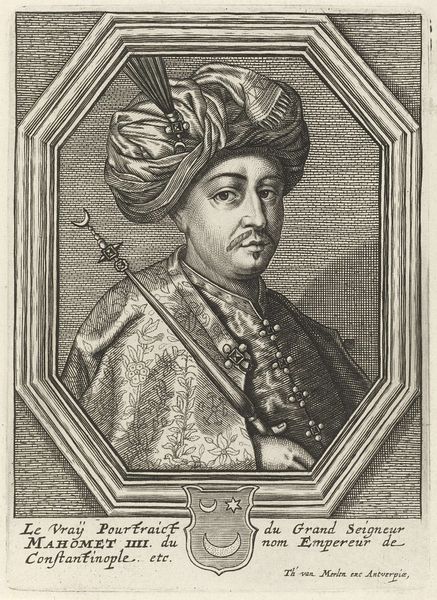
drawing, print, engraving
#
portrait
#
drawing
#
baroque
# print
#
old engraving style
#
historical photography
#
portrait reference
#
19th century
#
history-painting
#
engraving
Dimensions: height 482 mm, width 343 mm
Copyright: Rijks Museum: Open Domain
Curator: This engraving from 1714, "Portret van Jacob van Schuppen in zijn atelier" by Jan van der Bruggen, offers a glimpse into the world of an 18th-century artist. The texture, achieved by the engraving process, gives the image a fascinating depth. Editor: The first thing that strikes me is how staged it all feels. The almost performative display of the tools and setting up of a space that must be active when its being used. But then I see how the image uses material symbols to create meaning and express Jacob's standing as a historical figure within the painting world, someone people admire for their craftsmanship. Curator: Precisely. Jacob van Schuppen's clothing becomes a clear signifier for both wealth and position within the Viennese court. Consider the presence of his tools - he isn't merely depicted as noble, but as someone who's skill earned that place within the courts and academies he worked. It's not just a physical representation of him but also an articulation of his multiple roles. Editor: Looking closer, I'm drawn to the artist's gaze. While his garments appear opulent, there's something quite unromantic about how his eyes meets us. No vulnerability to suggest intimacy, and no real signs of engagement as there seems to be something forced in trying to read beyond the obvious signifiers to understand his mind frame here... I mean, what do we even think about that hat? And that enormous fur lining to show success! Curator: Ah, that is part of the iconographic language of status in this period! Every aspect serves to emphasize his achievements as court painter of Charles VI. Notice how the column acts not just as décor, but also implies architectural references to classical artistic traditions. This carefully constructed portrait is also more broadly speaking about institutional authority itself. Editor: It really prompts us to consider the means through which artistry intersects with social mobility in history. We tend to assume that painters who became so celebrated just arrived that way from the aether. Seeing how he is presented in relation to production shows a direct claim to prestige and class which is why all this imagery still stands true today for artists as it was true back then! Curator: Indeed. In studying Van der Bruggen’s print, we see art history in action, a material process etched with symbolic intent. Editor: Absolutely. We began seeing an artwork; but have ultimately uncovered processes of social making in historical imagery.
Comments
No comments
Be the first to comment and join the conversation on the ultimate creative platform.

